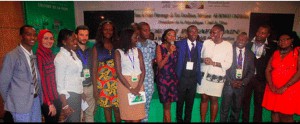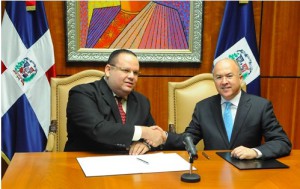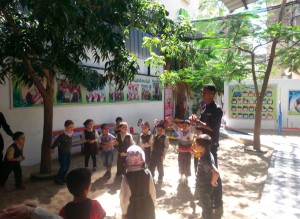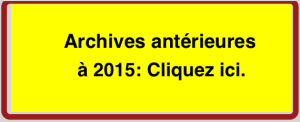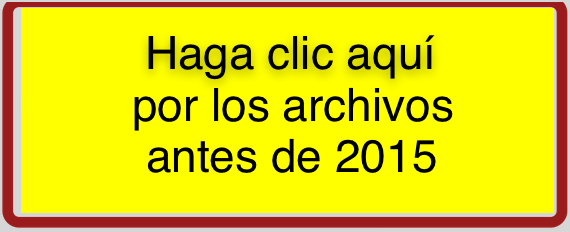. . . EDUCACIÓN PARA LA PAZ . . .
un artículo de Teleprensa (abreviado)
Los 268 centros educativos de la provincia integrados en la Red ‘Escuela: Espacio de Paz’ celebran hoy el Día Escolar de la No Violencia y la Paz [30 de Enero] con un programa de actividades lúdicas y culturales de promoción de los valores democráticos de la igualdad, el respeto a la diversidad, el diálogo y la tolerancia. Más de 100.000 alumnos y 5.000 docentes participan en estas iniciativas de mejora de la convivencia entre la comunidad educativa.

Haga clicK en la foto para ampliarla
Niños del colegio público de La Chanca han tomado las calles del barrio en su peculiar manifestación por la Paz
l acto principal se ha celebrado en el Centro de Usos Múltiples de Berja, organizado por los siete centros educativos del municipio que participan en la Red ‘Escuela: Espacio de Paz’ con el proyecto colectivo ‘Berja: Puerta de la Paz de La Alpujarra’. Se trata de la Escuela Infantil Barajas, CEPR Andrés Manjón, CEIP San Tesifón, CEIP Celia Viñas, CDP Nuestra Señora de Gádor, IES Villavieja e IES Sierra de Gádor. Más de medio millar de alumnos han asistido a este acto en el que se ha leído el ‘Manifiesto 2000’, un documento formulado por un grupo de Premios Nobel de la Paz con motivo de la celebración del 50 aniversario de la Declaración Universal de los Derechos Humanos para difundir la cultura de la paz y no violencia. El texto recoge la idea de la responsabilidad individual para actuar en el marco de la familia, la localidad, la región y el país practicando y fomentando la no violencia, la tolerancia, el diálogo, la reconciliación, la justicia y la solidaridad día a día.
Los escolares han leído mensajes sobre el respeto a la vida, el rechazo de la violencia, la generosidad, la comprensión, la conservación del medio ambiente y de los recursos naturales, la solidaridad y la igualdad. Además, los centros educativos han organizado, con la colaboración del Patronato Municipal de Deportes, una carrera solidaria a beneficio de la ONG Save the Children. El CEIP Palomares, de Cuevas del Almanzora, también se ha apuntado a la carrera de esta organización no gubernamental para recaudar fondos destinados a la población de El Sahel. Previamente, los alumnos han trabajado en sus aulas la información sobre la crisis alimentaria y las condiciones de vida en esta región africana. . .
En Vícar, el CEIP Federico García Lorca ha organizado varios circuitos de juegos cooperativos sobre los valores de la paz con la participación de la familias y con los alumnos de Secundaria como monitores.
El Día Escolar de la No Violencia y la Paz se celebra el 30 de enero desde 1964, cuando surgió como una iniciativa del profesor español Llorenç Vidal para la difusión de la educación en y para la tolerancia, la solidaridad, la concordia y el respeto a los derechos humanos. En 1993 recibió el respaldo de la UNESCO que convirtió esta celebración en Día Mundial. La efeméride coincide con la fecha de la muerte de Mahatma Gandhi, asesinado en 1948.
La delegada de Educación, Cultura y Deporte de la Junta, Isabel Arévalo, ha destacado que ‘la cultura de la paz no es sólo un contenido transversal sino que es una de las finalidades últimas del sistema público educativo en Andalucía que se concreta en el Plan Andaluz de Educación para la Cultura de Paz’, que supuso la creación de la Red ‘Escuela: Espacio de Paz’ en el curso 2002-2003.
( Clickear aquí para la version inglês)
What is the best way to teach peace to children?
Maria Montessori believed that peace was innate within children. Her timeless educational philosophy was developed around this basic understanding. Perhaps all we need to do as teachers is to provide stimulating learning environments that validate this knowing and understanding and nurture it. We may not have to actually teach it, Sharing peace-building stories gently attends to this. Strong, creative and imaginative peace-building characters who focus upon win-win and have faith in peace being possible are at the centre of the story plots. In Hassaun Ali-Jones Bey’s (Boundless Gratitude http://boundlessgratitude.com/products.html ) unique and mesmerising story, Black Ink is such a character who bravely crosses the universe seeking validation of what he knows in his heart. The magical character also models all the important peace-building values, understandings and actions needed for peace-building. I believe also that peace-building must be modelled and the whole teaching-learning environment should reflect similar values, understandings and actions…as is the primary focus of the Save the Children Australia UN Global Peace School Program upon which I am presently fortunate to be working. As Gandhi stated: ‘If we want peace in the world then we need to begin with the children.’ We need to listen to them. I also believe there are many ways to attend to peace-building..there’s not just one way…and fun and creativity should be elements of any peace-learning programme with children working together. Parents are also teachers and they can choose to share peace-building stories with children as well.
